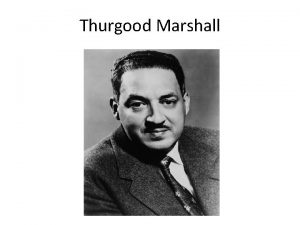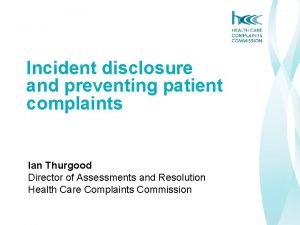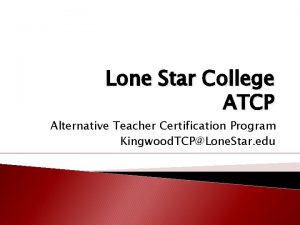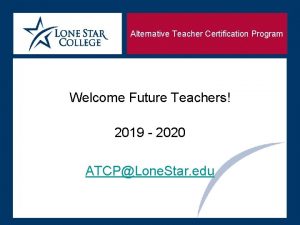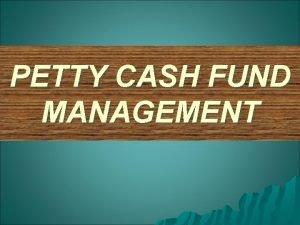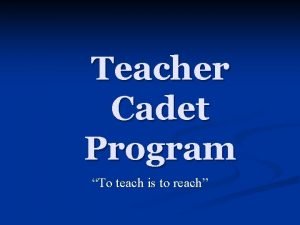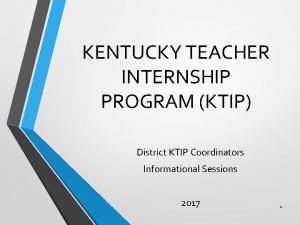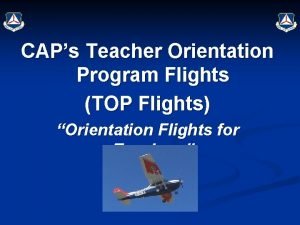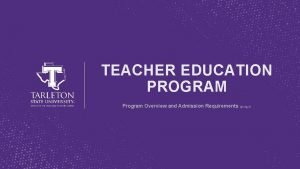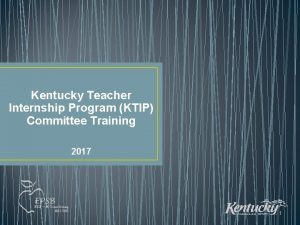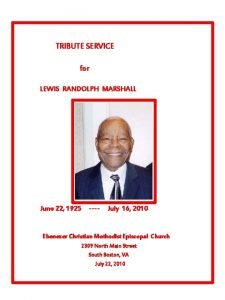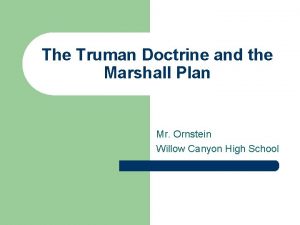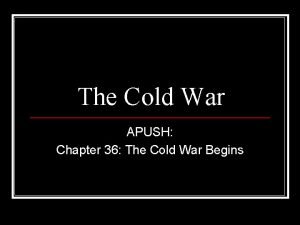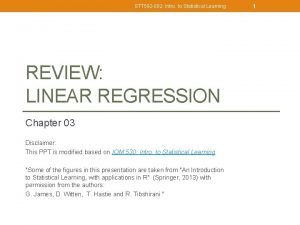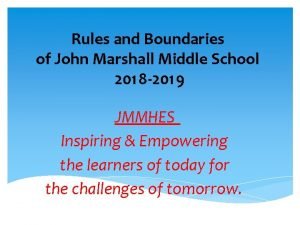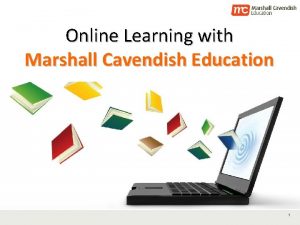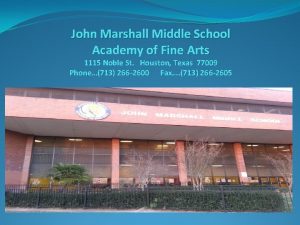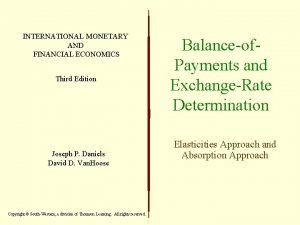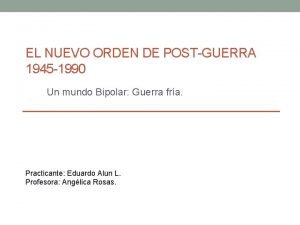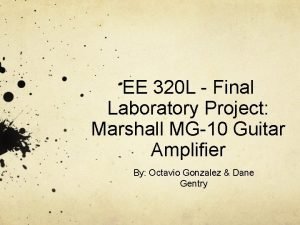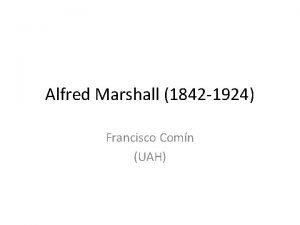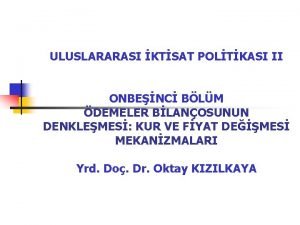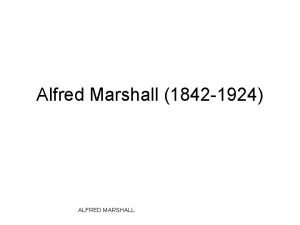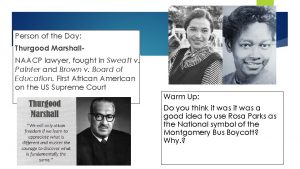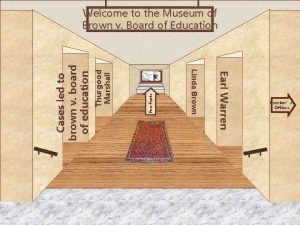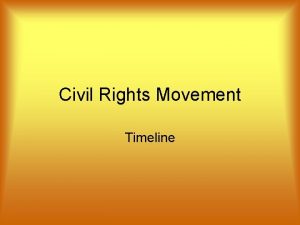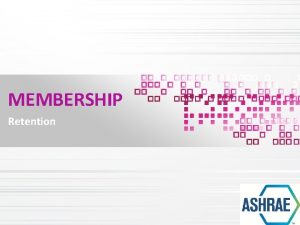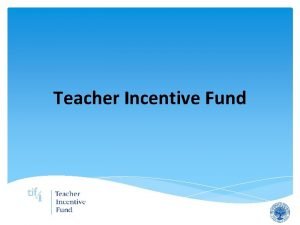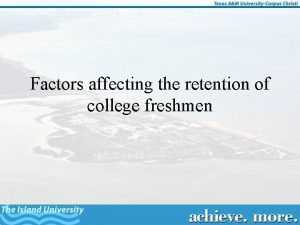Thurgood Marshall College Fund Teacher Quality Retention Program

















































- Slides: 49

Thurgood Marshall College Fund Teacher Quality & Retention Program 2014 VSU Faculty CCSS Training October 24 th 2014 Facilitators: Moseka Medlock & Hallie Hundemer-Booth WHEREEDUCATIONPAYSOFF® WHERE

AGREEMENTS • Be open minded and respectful of all ideas • Participate fully • Work collaboratively with your groups • Learn, reflect, implement and HAVE FUN! • Limit comments to 1 minute (or less) • Utilize the parking lot as needed WHERE 2 EDUCATION PAYS OFF®

K-W-L • K- What do you know about the Common Core State Standards? • W- What do you want to know about the Common Core State Standards? • L- What have you learned about the Common Core State Standards? 3 WHERE EDUCATION PAYS OFF®

Background of the Common Core Initiated by the National Governors Association (NGA) and Council of Chief State School Officers (CCSSO) with the following design principles: • Result in College and Career Readiness • Based on solid research and practice evidence • Fewer, clearer, and higher WHERE EDUCATION PAYS OFF®

How did CCSS emerge? • State led initiative • NGA and CCSSO collaborated • Took best of state standards and internationally benchmarked them • 2009 CCR Anchor Standards released • 2010 CCSS released • Not national standards • Different states are at different levels of implementation. WHERE EDUCATION PAYS OFF®

What are our expectations? Based on the beliefs that • A quality education is a key factor in providing all children with opportunities to be successful after high school • not enough to simply receive a credential – students need critical knowledge and skills • not a high school issue, it is an education system issue. WHERE 6 EDUCATION PAYS OFF®

Diving into the Content Area Literacy Shifts. Review 7 WHEREEDUCATIONPAYSOFF® WHERE

ELA/Literacy: 3 shifts 1. Building knowledge through contentrich nonfiction 2. Reading, writing, and speaking grounded in evidence from text, both literary and informational 3. Regular practice with complex text and its academic language WHERE EDUCATION PAYS OFF®

3 -2 -1 Strategy • Jot down 3 ideas about what this shift means as it relates to college & career readiness • Jot down 2 examples of how this shift can be or is implemented in the education course you teach • Jot down 1 potential obstacle or unresolved question related to this shift or its implementation WHERE EDUCATION PAYS OFF® 9

Carousel • Each shift is written on a poster. Each group will use a different colored marker to write 2 of their best ideas (per group) for how they can implement that shift in their education course. • Rotate to all the other posters, reading them and adding 2 to 3 more ideas. • Do a “gallery walk” and discuss the results WHERE EDUCATION PAYS OFF® 10

Shift #1: Building Knowledge Through Content-Rich Nonfiction WHERE EDUCATION PAYS OFF® 11

Distribution of Literacy and Informational Texts WHERE 12 EDUCATION PAYS OFF®

All Teachers Support Literacy • Students must be proficient in reading complex informational texts to be college and career ready • Most required reading in college and workforce is informational • higher volume of complex informational reading in post secondary education. WHERE 13 EDUCATION PAYS OFF®

Shift #2: Reading, Writing and Speaking Grounded in Evidence From Text, Both Literary and Informational WHERE EDUCATION PAYS OFF® 14

Reading, Writing and Speaking Grounded in Evidence from Text: Why? • Most college and workplace writing requires evidence. • Ability to cite evidence differentiates strong from weak student performance on NAEP. • Being able to locate and deploy evidence are hallmarks of strong readers and writers. WHERE 15 EDUCATION PAYS OFF®

Shift #3: Regular Practice with Complex Text and its Academic Language WHERE EDUCATION PAYS OFF® 16

Regular Practice With Complex text and Its Academic Language: Why? • Gap between complexity of college and high school texts is huge. • What students can read, in terms of complexity, is greatest predictor of success in college ( 2006 ACT study). • Too many students are reading at too low a level. WHERE 17 EDUCATION PAYS OFF®

Qualitative Features of Complex Text • Subtle transitions • Multiple and/or subtle themes and purposes • Density of information • Unfamiliar settings, topics or events • Lack of repetition in words and sentences • Complex sentences and longer paragraphs • Uncommon vocabulary WHERE 18 EDUCATION PAYS OFF®

10 Minute Break WHERE 19 EDUCATION PAYS OFF®

Why Be a Critical Consumer of Media? WHEREEDUCATIONPAYSOFF® WHERE

SMELL TEST - John Mc. Manus S stands for Source. Who is providing the information? M is for Motivation. Why are they telling me this? E represents Evidence. What evidence is provided for generalizations? L is for Logic. Do the facts logically compel the conclusions? L is for Left out. What’s missing that might change our interpretation of the information? WHERE EDUCATION PAYS OFF®

SMELL the Articles Critical Consumer Test • Complete the SMELL test for the following articles and be ready to share out your feelings on which you would use in your class and why. http: //climate. nasa. gov/news/1091/ http: //en. wikipedia. org/wiki/Global_ warming WHERE EDUCATION PAYS OFF®

Digital Drivers License https: //otis. coe. uky. edu/DDL/launch. p hp WHERE EDUCATION PAYS OFF®

Choose a partner • Each group will be assigned 2 rules of thumb for deconstructing standards • Read your rule for deconstruction and discuss with partner • describe the meaning in your own words and give an example using CCSS WHERE EDUCATION PAYS OFF®

Where Am I Going? Provide students with clear and understandable vision of the learning target R. Stiggins, J. Arter, J. Chappuis, & S. Chappius (2006) Classroom Assessment for Student Learning. ETS. WHERE EDUCATION PAYS OFF® Portland, OR.

Clear Learning Target • If the learning is unclear to you then – You will not be able to make it clear to students. – It will be unclear what to teach and how to assess. – It could be interpreted different ways that could lead to significantly different learning experiences. WHERE EDUCATION PAYS OFF®

Clear Learning Target • Create learning targets that are inherent to the intent of the standard. • Sometimes the benchmark or standard is stated in a manner that is clear and may only need to be categorized to determine which method should be used to assess the intended learning. WHERE EDUCATION PAYS OFF®

Rules of Thumb for Deconstruction of Standards 1. Deconstruction of a standard should occur only if it makes the standard clearer- sometimes you don’t know that until you try to deconstruct it. 2. There are no “product” targets/standards for reading. “Product” target/standards in mathematics require students to produce a concrete tangible item; a simple sketch/drawing is not math product. 3. Phonics targets are typically knowledge targets. Mathematical procedures where students follow memorized rules or algorithms are knowledge targets because they only require procedural knowledge. WHERE EDUCATION PAYS OFF®

Rules of Thumb for Deconstruction of Standards 4. Only “performance skill‟ in reading involves reading aloud, where the only way you could have evidence of attainment of the standard is to LISTEN to students. Everything else in reading is either knowledge or reasoning. The only “performance skills‟ in mathematics include standards where you would actually have to OBSERVE students so you can SEE or HEAR them to know if they mastered the target. 5. A product target will not always have an accompanying performance skill target. Product targets sometimes produce evidence of target attainment that do not require a „direct observation‟ of performance. (i. e. , using the writing process to complete an assigned piece of writing). Teachers do not always need to SEE or HEAR the students drafting their ideas. The finished product will provide the evidence. WHERE EDUCATION PAYS OFF®

Rules of Thumb for Deconstruction of Standards 6. Performance skill and product targets assure that educators do not “scantron their way through life. ” The “screener” for determining whether or not a standard is a performance skill or product target is that it cannot be assessed accurately using selected response or extended response assessment items. Performance skill targets and product targets require observations, „other‟ assessments, or specific products (that would be beyond any typical extended written response) that focus on degrees of QUALITY, not just right or wrong. 7. Don’t belittle the knowledge category – knowledge does not equal “easy or simple. ‟ Knowledge includes procedural knowledge-- KNOWS HOW, as well as KNOWS THAT and KNOWS WHEN. (Tying your shoe begins as a skill, but becomes procedural knowledge once you have mastered it). WHERE EDUCATION PAYS OFF®

Rules of Thumb for Deconstruction of Standards 8. Product vs. Learning Task: Some standards may seem to imply that a “product” is called for when in fact WE impose a notion of HOW we would teach or look for mastery of the target (assess). In that case, the standard probably doesn't have an underpinning product target. Be sure when you are deconstructing standards that the FOCUS is on the learning intended– and not the instructional lesson or activity you would design. 9. Comprehension, just like understands, is a FUZZY term (i. e. , different people interpret it in different ways). If you use that word in a target, it needs to be more clearly defined. 10. The ultimate reasons we categorize standards/targets include: a. To reflect the true cognitive demand needed b. To inform the best (valid and efficient) assessment method for gathering defensible evidence of student WHERE EDUCATION PAYS OFF®

Types of Learning Targets Knowled Reasonin Performanc Product ge g e Skills What knowledge or understanding is required to become competent on this standard? What reasoning (if any) is required to be competent on this standard? What performance skills (if any) are required to demonstrate competence on this standard? What product competencies (if any) are required by this standard? Remember, not all standards have all of these as underpinnings and some standards may only need to be ‘classified’ to assist with assessing students’ learning. WHERE EDUCATION PAYS OFF®

Cognitive Scaffolding and Targets Performanc e Skills Product s Reasonin g Knowledge 33 WHERE EDUCATION PAYS OFF®

Pe r fo S rm k i an l c l s e t c u d o r P Kn ow le dg e Re as on in g Intent of Performance Expectation WHERE EDUCATION PAYS OFF®

10 Minute Break WHERE 35 EDUCATION PAYS OFF®

Example of the work Performance Expectation • K-PS 2 -2 How to use: • Activity 4. 2 • Activity 4. 4 WHERE EDUCATION PAYS OFF®

PROTOCOLS Activity 4. 2 Target – Method Match Template Take each LT: Determine what type of Assessment Method would be appropriate for each. WHERE EDUCATION PAYS OFF®

Learning Target Match • Use K-PS 2 -2 look over the learning targets created in each section and Match the Learning Target with the Target Type and what type of assessment could be used to assess that target. • Evaluate the number of each type of assessment used. Note: You can check more than one assessment type. WHERE EDUCATION PAYS OFF®

Types of Assessments • Selected Response – Multiple choice • Extended Written Response • Performance • Personal Communication – Anecdotal notes from verbal discussion with student WHERE EDUCATION PAYS OFF®

Assessment – Learning Target Match • Take the assessments given to you and match each question or activity to the correct Learning Target assessed (could possibly be more than one assessed) • What patterns and/or concerns do you see? • What changes would needed to be made with these activities/questions? WHERE EDUCATION PAYS OFF®

Assessment Creation • Once you have examined the LT’s and determined what type of assessment method you should use look for/create the assessment questions. • Once you have selected the questions/activities/extended response items use Activity 4. 4 Audit an Assessment for Clear Learning Targets to assess what targets are assessed for each WHERE EDUCATION PAYS OFF®

WHERE EDUCATION PAYS OFF®

Anyone too busy to reflect on one’s practice is also too busy to improve. Robert Garmston 43 WHERE EDUCATION PAYS OFF®

YOUR TURN 1) Find the course objectives within your subject that you wish to work with. 2) Begin to deconstruct the standard/PE using the forms provided 3) Once the deconstruction of the standard is complete use the Learning Target Match form to check for connection and match. WHERE EDUCATION PAYS OFF®

Kentucky Examples of Math & Language Arts Deconstruction • http: //education. ky. gov/curriculum/mat h/pages/mathematics-deconstructedstandards. aspx • http: //education. ky. gov/curriculum/ela/ pages/ela-deconstructedstandards. aspx WHERE EDUCATION PAYS OFF®

Share Out • Share comments about the process • Questions/Concerns/Discussions • Next Steps WHERE EDUCATION PAYS OFF®

Thank you for your time! WHEREEDUCATIONPAYSOFF® WHERE

Moseka Medlock TMCF Common Core Success Coach moseka. medlock@tmcfund. org Hallie Hundemer-Booth Student Achievement Partners halliehundemerbooth@gmail. com WHEREEDUCATIONPAYSOFF® WHERE

Types of Learning Targets – Using the Cognitive Rigor Matrix to design targets WHERE EDUCATION PAYS OFF®
 Thurgood marshall ducksters
Thurgood marshall ducksters Ian thurgood
Ian thurgood Lone star college alternative teacher certification program
Lone star college alternative teacher certification program Dhh operator certification
Dhh operator certification Petty cash management system
Petty cash management system Wake tech admissions
Wake tech admissions Mecs order no. 33 s. 1984
Mecs order no. 33 s. 1984 Good afternoon my dear students
Good afternoon my dear students Quality assurance vs quality control
Quality assurance vs quality control Plan quality management pmp
Plan quality management pmp What are quality standards in project management
What are quality standards in project management Define quality assurance in nursing
Define quality assurance in nursing Compliance vs quality
Compliance vs quality Quality control basics
Quality control basics Which of the gurus would be the father of quality control?
Which of the gurus would be the father of quality control? Quality is free
Quality is free What is tqm
What is tqm Nc teacher cadet program
Nc teacher cadet program Ktip forms
Ktip forms Teacher orientation program
Teacher orientation program Ktip handbook
Ktip handbook Tarleton teacher education program
Tarleton teacher education program Kentucky teacher internship program
Kentucky teacher internship program Early college high school at midland college
Early college high school at midland college Breech delivery maneuvers
Breech delivery maneuvers Truman doctrine key points
Truman doctrine key points Marshall lernerov uvjet
Marshall lernerov uvjet John marshall randolph
John marshall randolph Vivian burey marshall pictures
Vivian burey marshall pictures Marshall plan
Marshall plan Marshall bermann
Marshall bermann карикатура
карикатура Cuban missile crisis apush
Cuban missile crisis apush Http://www-bcf.usc.edu/~gareth/isl/advertising.csv
Http://www-bcf.usc.edu/~gareth/isl/advertising.csv Angka indeks statistika
Angka indeks statistika John marshall middle school uniform
John marshall middle school uniform Umich
Umich Marshall pickens review
Marshall pickens review Mconline login 2020
Mconline login 2020 Marshall sponder
Marshall sponder Marshall middle school houston tx
Marshall middle school houston tx Marshall lerner condition
Marshall lerner condition Gcm hs
Gcm hs Eminem's real name?
Eminem's real name? Plan marshall
Plan marshall Marshall mg10 schematic
Marshall mg10 schematic Where did james w marshall find gold
Where did james w marshall find gold Alec marshall
Alec marshall Alfred marshall (1842-1924)
Alfred marshall (1842-1924) Marshall lerner koşulu
Marshall lerner koşulu
